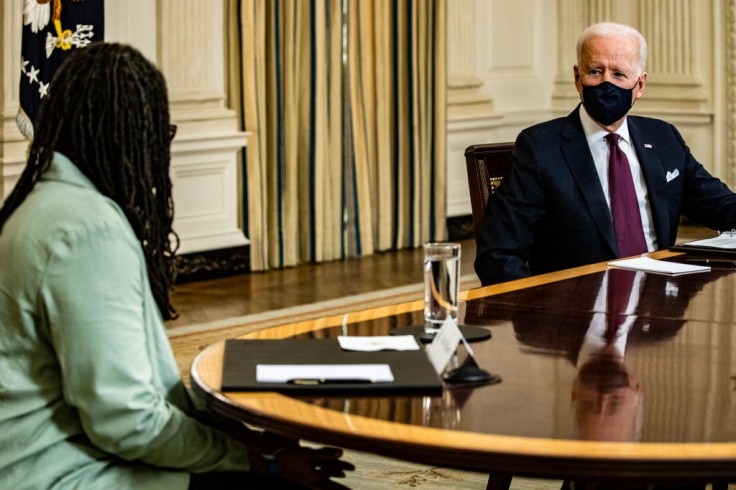
The benefits of COVID pandemic-era stimulus checks went beyond everyday cents and dollars for most Americans. That was the case for Denise Diaz, who said the checks rewired how she thought about money.
The mom of three, who lives outside Orlando, Florida, told CNBC that she received more than $10,000 from three rounds of "economic impact payments" from the federal government. They were among the 472 million payments issued by the U.S. government, totaling a whopping $803 billion.
The effort amounted to an unparalleled experiment to prop up American households as the COVID-19 pandemic wreaked havoc on the U.S. economy. The stimulus checks are at the epicenter of a heated debate in the United States as to whether and to what extent the financial assistance helped trigger inflation in the country, which is running at its highest since 1982.
Stimulus checks provide major boost to millions of Americans
The fact remains that the checks offered a lifeline to millions of Americans during the worst unemployment spell in the country since the Great Depression. Recipients used the money they received from the government in various ways, from covering household staples and making debt payments to creating rainy-day funds.
Diaz, who co-directs a local nonprofit organization, Central Florida Jobs With Justice, used the funds she received from the government to pay off a car loan and a credit card. That helped Diaz big time as her credit score suddenly improved. She also managed to build an emergency fund which the household relied upon when her partner lost his job earlier this year.
Thanks to the stimulus checks, the 41-year-old mother feels more financially stable than during any other period of her adult life. The financial buffer and the peace of mind that comes with it also changed Diaz's psychology regarding her finances. She automated bill payments for credit cards, utilities, and a second family car for the first time.
The stimulus checks that benefited the majority of Americans, including Diaz, were the result of legislation - the Coronavirus Aid, Relief, and Economic Security (CARES) Act, Consolidated Appropriations Act and American Rescue Plan Act - that Congress passed in 2020 and 2021 to manage the fallout from the COVID pandemic.
Read Also: Jennifer Lopez Reveals in Netflix Documentary that Her Mom Beat Her Up When She Was a Child
U.S. government issues payments of up to $1,200, $600 and $1,400 a person
American households received payments of up to $1,200, $600, and $1,400 a person, respectively. Qualifications such as payment amounts for dependents and income limits changed over those three funding tranches.
Census Bureau survey data showed most households in the U.S. used the funds for household and food products and to make vehicle, mortgage, utility, rent, and other debt payments. To a lesser extent, they used the checks for savings, clothing, investments, and recreational goods.
Hina Latif and Salaam Bhatti, a married couple based in Richmond, Virginia, used a chunk of their funds to reduce their credit card debt. Long Beach native Nestor Moto Jr. largely used his stimulus payments to chip away his student loans.